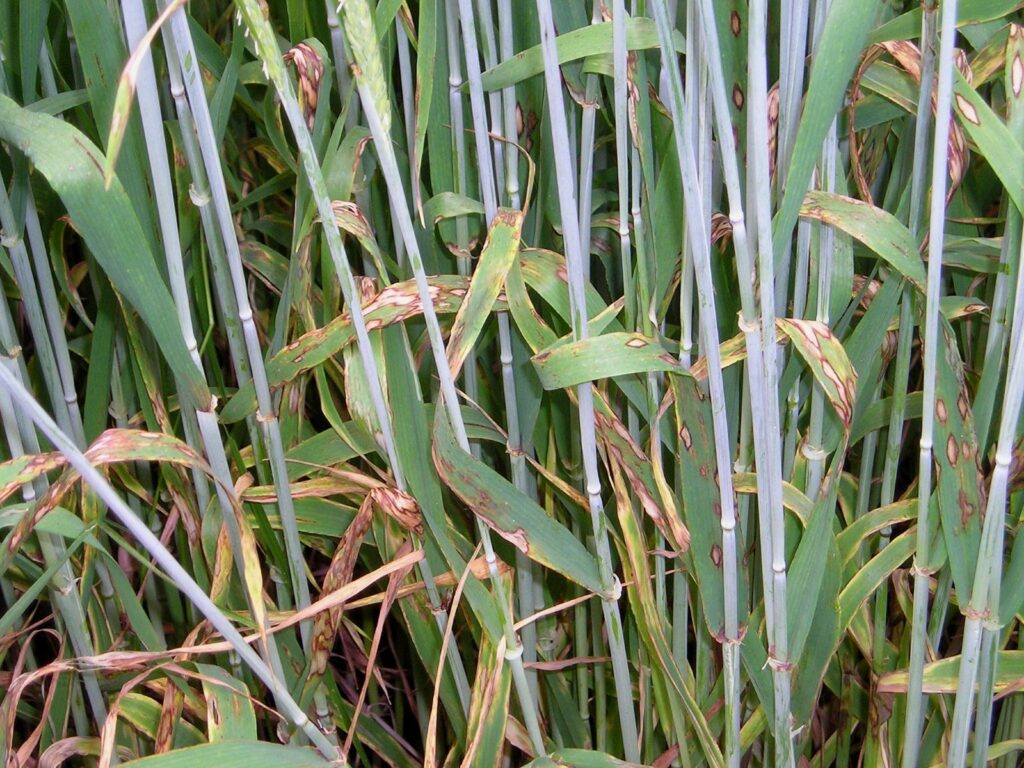T2 spray timing critical amid increasing disease pressure in barley
25th April 2023
With barely crops forecasted to grow rapidly over the next few weeks, the timing of T2 (GS39-45) spray applications will be critical for both PGR and disease management to effectively mitigate against the risks of big canopies, crop production specialists Hutchinsons have warned.
Due to significant amounts of rainfall seen across the country throughout the early spring, most common wet weather diseases will already be found in barley, particularly in crops that have not been treated with T0 due to weather constraints, Hutchinsons’ head of ICM David Howard said.
“Traditionally the T2 fungicide application in barley has been regarded as less important than the T1 spray, since the ears and smaller upper foliage generally contribute less to yield than in wheat.
“However, in the case of most hybrid barleys, the larger upper leaves and ears mean that the later sprays in these varieties are increasing in importance compared to those applied at GS 30‐31,” he pointed out.
“As with wheat, the timing of the T2 application should be less than 4 weeks from the T1 if possible. Historically, many T2 applications have been applied at the ‘paintbrush stage’ as the awns begin to emerge (GS 49).
“However, it may be necessary to apply slightly earlier from flag leaf up to booting (GS 39‐45), particularly if application of an additional ethephon based PGR is necessary or if high levels of disease are present,” he advised.
According to Mr Howard, net blotch is already being detected in many barley crops this season, with Rhynchosporium also becoming evident. In addition, there have been reports of powdery mildew and brown rust also building rapidly in some crops.
With disease pressure from Ramularia on the rise, Mr Howard suggested farmers should consider bringing the timing of T2 application forward to ensure crops are sufficiently protected. “This also allows for an additional later spray at GS 49‐59 to top up the T2 spray, improving persistence of Ramularia control,” he added.
Product choice at this stage is also critical, Mr Howard noted, as there are an increasing number of Ramularia strains resistant to most fungicide groups with the exception of multi-sites.
“Folpet was recently granted moderate control of Ramularia on its label showing how consistently it can benefit against this difficult disease. Trials have also shown that mefentrifluconazole-based products have excellent broad‐spectrum activity including efficacy on Ramularia making them a useful T2 alternative,” he said.
“The stress reduction and plant health elements of Scyon have also been shown in trials to be useful when included with the T2 fungicide.”
Advice for Rhynchosporium and brown rust control
Where Rhynchosporium is the dominant disease, Mr Howard recommended including prothioconazole in T2 sprays to extend protection against most other diseases including mildew.
“The inclusion of an SDHI such as fluxapyroxad or benzovindiflupyr will broaden disease control as well as offering physiological benefits,” he said.
“The combination of fluxapyroxad + mefentrifluconazole offers a very rounded option with significant Rhynchosporium control from fluxapyroxad, which is the most potent SDHI on Rhynchosporium with the support of mefentrifluconazole for other late diseases like Ramularia.
“Recent AHDB trials have also shown that bixafen + fluopyram combinations with prothioconazole offer significant benefits over prothioconazole + bixafen alone,” Mr Howard added.
The inclusion of prothioconazole is even more important in crops where net blotch risk is high, he pointed out, since recent surveys confirmed the existence of strains with reduced susceptibility to the SDHI’s and strobilurins. However, pyraclostrobin is much less affected than other strobilurins and should be included in high‐risk situations.
“As with Rhynchosporium, AHDB trials have also shown that the high loading of prothioconazole in combination with bixafen + fluopyram offers significant improvements in net blotch control compared to prothioconazole + bixafen alone,” Mr Howard advised.
“Benzovindiflupyr+ prothioconazole can be utilised here due to its prothioconazole element but rates will need to be kept high to get suitable amounts of the key active.”
Meanwhile, in varieties susceptible to brown rust, he recommended using products containing the active Benzovindiflupyr as well as tebuconazole. Whereas, additional protection can be achieved with the inclusion of relevant strobilurins such as azoxystrobin or pyraclostrobin.
While mildew can be reasonably controlled by prothioconazole, where varieties are susceptible and disease is present, farmers should add cyflufenamid to the T2 mix but avoid using it sequentially, Mr Howard cautioned.
“Dose rates for T2’s are usually less than for T1’s but this may need to alter if disease pressure remains high or on hybrid barleys where the T2 spray is more important for yield,” he added.
“It is important to bear in mind timing and total dose restrictions on the use of fluxapyroxad in crops for malting crops; it must be used before GS45 and the dose rate should not exceed 62.5gai/ha.”

